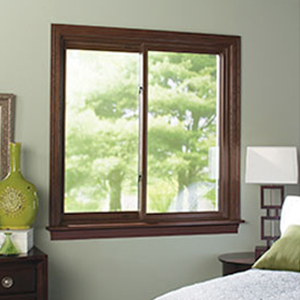Condensation is a sure sign that your home windows should be replaced.
Windows are a vital obstacle between the severe, variable weather conditions outside and our tranquility, constant home temperature levels. Home replacement windows tend to have a fifteen to twenty-year lifespan, so fortunately we do not have to think about replacing them frequently. But recognizing when it's time to replace them can be complicated. You could be tempted to try and hold out for another season if you notice the warning signs. However replacing your windows currently could help you prolong the life of your whole house and also maintain you and your household cozy all winter long. Right here are a few signs that your home windows are not all set for the harsh winter season this year.
Drafty House
As windows age, they start diminishing, breaking, as well as not closing correctly, enabling air from inside your home to flow out. As a result of this, your A/C system has a hard time to keep your residence at a constant temperature and sends your energy expenses skyrocketing. If your home is visibly a lot more drafty or your electrical costs appear to be going up this succumb to no noticeable reason, you could want to have your windows had a look at.
Hard to Lock
We take pleasure in having our windows open when the weather is nice, yet they shouldn't be open every one of the time. During the winter and when we're not home, your windows ought to be shut in area and locked. Windows with malfunctioning locks is a significant safety and security threat that should be fixed asap to maintain your family risk-free. Often the lock can be repaired reasonably, but if the window is having difficulty staying open or shut or is dripping air, it might be best to just set up a new one.
Condensation Forming
The greatest indicator that you require new windows is when condensation starts to base on the within your home window when it is shut and locked. This is indicative of a most likely irreparable flaw and also needs to be addressed asap to stop the possible development of mold in the structure, which can infect various other areas of your residence as well as create severe damage when left untreated.
Have you nearly had it with your old, breezy windows?
Is this the year you've decided to lastly change your home windows? Replacing your home windows with new ones features lots of advantages, consisting of a power efficiency boost, far better ventilation, and much better top quality of light in your home. The National Fenestration Ranking Council certifies as well as identifies home windows (along with doors and skylights) on their performance and energy efficiency. When you're purchasing brand-new windows you'll see these scores on the NFRC label. In this week's blog, we'll discuss the best ways to read this tag to earn sure you're making an informed decision on your new windows.
Warmth Gain and also Loss
The initial www.bureshhomesolutions.com 3 residential or commercial properties on the label involve exactly how the window performs when it come to warm gain and loss. Windows gain and also lose heat in 3 ways:
Straight conduction via the glass.
Radiation of warmth from the sun right into your home, and away from the house from things in the house.
Air leak through and also around the window.
U-factor
This is "The rate at which a home window, door, or skylight carries out non-solar warmth flow." The takeaway right here is "The reduced the U-factor, the more energy-efficient the window, door, or skylight."

Solar Warmth Gain Coefficient
The SHGC tells us how much radiation is admitted through the home window and also launched as warmth in the house. The lower the number, the much less warmth is transferred. However, this doesn't necessarily suggest you desire a reduced SHGC. As an example, because a greater SGHC implies the window enables a lot more warmth in, you could allow much more solar heat inside in the winter, which can minimize your heating needs. In this case, the environment you live in will certainly play a major factor in picking an SHGC score.
Air Leak
This measures how much air the window allows relative to a certain stress difference across it. The reduced the score, the much less air leakage.
Sunlight Transmittance
The following two scores determine how much light a window lets into your house.
Noticeable Passage (VT).
This number between 0 as well as 1 actions what portion of the range of visible light the window lets through. The higher the fraction, the much more light the window will certainly permit. If you wish to utilize daylighting in your home, you'll want a higher fraction. If you want to decrease interior glow, you might desire a lower fraction.
Light-to-Solar Gain.
This number is the ratio in between the SHGC as well as the VT. "The higher the number, the much more light sent without including too much amounts of heat.".